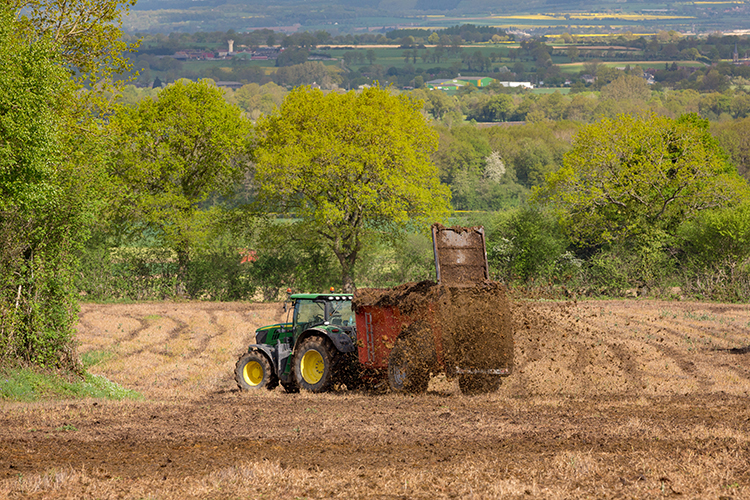
“Manure is extremely valuable,” said Brook Wilke, the associate director of science and agronomy at Michigan State University’s Kellogg Biological Station. “If you have an opportunity to get some manure or compost on your fields, you should take advantage of that opportunity.”
During a Michigan State University Field Crops Virtual Breakfast webcast, Wilke emphasized how manure can improve soil health, which in turn increases crop yields and provides some resilience during drought conditions.
“Manure is one of the fastest ways to build soil health,” he stated. “Manure also provides necessary plant nutrients and can substitute for commercial fertilizers.”
Wilke acknowledged that manure application does come with challenges.
“Compaction from driving heavy equipment across the field can be a real issue,” he noted. He said that the loss of nutrients to air, surface and groundwater, and neighbors’ fields and lawns is also a concern. Odor and drinking water quality can be worries of people living near farms, too.
He said that the right timing, right equipment, and right practices can get this nutrient source onto fields where it is most beneficial. “The goal when applying manure is to minimize risks and maximize value of this valuable product,” stated Wilke.
He offered a few tips to listeners to improve the manure application process. One is to apply manure when fields are dry enough to hold up equipment. “When making narrow passes across the field with heavy equipment, you don’t want to compact soil which leads to other problems down the road and maybe deflates the value you’re getting from the manure,” he shared.
Cover the fields
He also advised delaying applications until there is a crop in the field to take up the manure nutrients. Although there is typically a window of opportunity to get manure applied after crops are harvested in the fall, nutrients can be lost if nothing is replanted in the field until spring.
This is where cover crops can play a valuable role in a nutrient management strategy. “It’s probably the most important thing you can do to optimize the value of manure and mitigate the risk of putting those nutrients out there this time of year,” Wilke stated.
Many plant species are available when planting cover crops in the summer, and Wilke said farmers can really plant anything they can find with affordable seed. There are fewer options in the fall, as plants need to be able to survive the winter, and this is where cereal grains can fill more of a need.
When coupled with manure application, Wilke said cover crops will retain and recycle the manure nutrients until termination prior to the next cash crop planting. Manure is also a benefit to the cover crop, providing nutrients to grow and helping the cover crop produce more biomass, generating more benefit from the system.
Timing of manure application on fields with cover crops is important, Wilke said. He recommended applying manure right before or at the time of planting or waiting until the cover crop is established. Application right as the plants are coming up can result in damage due to wheel traffic.
Incorporating this applied manure is a good tactic, especially in fields with tile drains to limit phosphorus losses. Incorporation also minimizes ammonia loss. In sandier areas that are not close to waterways, Wilke said no-till could be considered.








